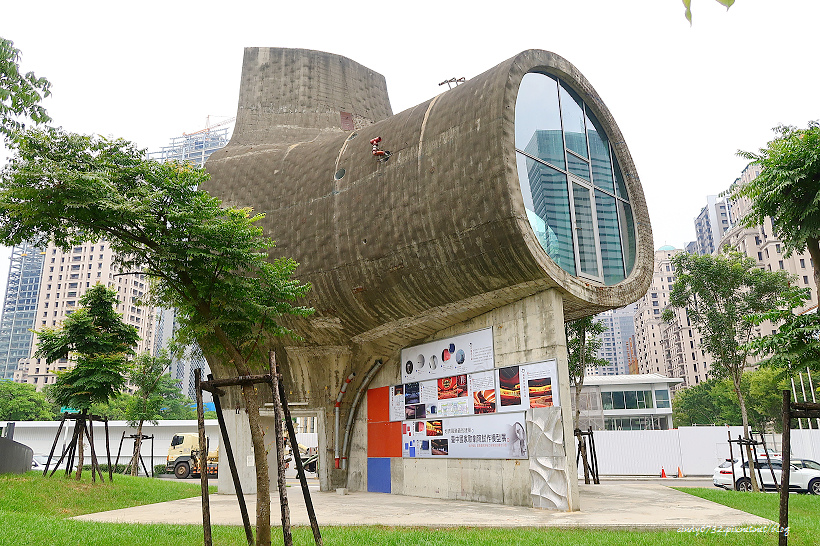中文計劃書資料: 可能世界簡介和聲音可能世界
1. 基本理論
(1)虛構的再中心化 (fictional recentering):
Ryan 認為,將自己定位於虛構文本所指示的世界,並視之為現實世界的現象,
稱為「虛構的再中心化」(fictional recentering)。
劉易斯對真實世界(AW),採取的是指示性、參照式(referential)的立場,
所謂現實(actual)即是「我」「敘事者」所指示的(indexical)世界,所參照到的世界。
如此,所謂現實 (actual), 即是存在於「我」說話時所處的世界。
(2) 可達性 (accessibility):
根據克里普克的觀點,可能性(possibility)與可達性(accessibility)是同義的:
如果一個世界對於我們的真實世界系統來說是可達的(accessible),
那麼這個世界就是可能世界。
Ryan (1991)提出文本現實世界(TAW)的九種類型的可達性:
(1) 特徵一致性(identity of properties)
(2) 配置一致性(identity of inventory)
(3) 配置相容性(compatibility of inventory)
(4) 年代相容性(chronological compatibility)
(5) 物理相容性(physical compatibility)
(6) 分類學相容性(taxonomic compatibility)
(7) 邏輯相容性(logic compatibility)
(8) 分析相容性(analytical compatibility)
(9) 語言相容性(linguistic compatibility)
討論:
「真實非虛構文本」、「寫實小說」必須九項皆成立,
「歷史虛構小說」則(1)(2)不成立,其餘成立,
而「科幻小說」則通常(2)(4)(6)可以不成立
(3) 敘事模型:
「參照性/指示性解離」(referential divorce):
現實世界的「我」與重置(relocated)於文字世界中的「我」,
是開展可能世界敘事模型的基礎。
"虛構敘事溝通模型第一版,圖取自 (Ryan, 1991)"
代替講者在可能世界中的敘事,可分兩種,
一是非個人客觀敘事(通常是第三人稱),另一個是個人主觀敘事(通常是第一人稱)。
聽者都必須假裝進入此可能世界聆聽代替講者的陳述。
Design Referential World:
現實世界(AW)中的推測設計師D,
扮演在可能世界中的代替設計者(substitute designer)D’,
而現實世界的使用者,則扮演可能世界中的代替使用者U’,
同時D’為U’的問題,提出設計物d。
聽者(觀眾)並不進行扮演可能世界中的聽者,
而是被邀請(主動或被動認同)成為該世界中的一員:
虛構敘事溝通模型第二版,圖取自 (Ryan, 1991)
三條虛構的規則(fictional rules):
(1) 講者S 希望聽者H 假裝:敘事是「代替講者S’」說給「代替聽者H’」聽的。
(2) 講者S 希望聽者H 假設:「代替講者S’」與講者S 沒有對應關係。
(3) 講者S 希望聽者H 扮演:事實是發生在「文本所指涉世界」TRW 中。
虛構敘事溝通模型第三版,圖取自 (Ryan, 1991)
2. 推測設計研究文獻中的可能世界 (See the following quotes)
3. Sonic possible world (討論如何延伸)
"Possible World" in speculative design literature:
1. The universe of possible worlds is constantly expanding and diversifying
thanks to the incessant world-constructing activity of human minds and
hands. Literary fiction is probably the most active experimental laboratory of the world-constructing enterprise. p. 69, SE
2.
As Lubomír Doležel writes in Heterocosmica: Fiction and Possible Worlds,
“Our actual world is surrounded by an infinity of other possible worlds.” p. 70, SE
4.
Although rarely discussed in design beyond the construction of
brand worlds and corporate future technology videos, there is a rich
body of theoretical work in other fields dealing with the idea of fictional
worlds. Probably the most abstract discussion is in philosophy where
differences between the many shades of real, fictional, possible, actual,
unreal, and imaginary are teased out. In social and political science the
focus is on modeling reality; in literary theory it is on the semantics of
the real and nonreal; in fine art, make-believe theory and fiction; in
game design, literal world creation; and even in science there are many
rich strands of discourse around fictionalism, useful fictions, model
organisms, and multiverses. For us, the key distinction is between
actual and fictional. Actual is part of the world we occupy whereas
fictional is not. p. 70, SE
5.
Speculating is based on imagination, the ability to literally (如實地) imagine
other worlds and alternatives.
6.
Possible worlds is a philosophical concept developed in the
latter twentieth century by the analytical school, including
philosophers Saul Kripke and David Lewis [34, 48] and
was later adopted by literary theorists [cf. 38, 22, 45].
Philosophically, possible worlds is an approach to the
problem of counterfactual statements in modal logic. For
example, Kripke asks what is the truth condition of the
statement that Sherlock Holmes “does not exist, but in other
states of affairs he would have existed” [31]; or this
counterfactual statement by Ryan [48], “if a couple hundred
more Florida voters had voted for Gore in 2000, the Iraq
war would not have happened.” In modal logic, the
question is how is each of these counterfactual statements
interpreted to be true or false. The philosopher David Lewis
who bridged analytical philosophy to literary theory [32]
offered the position that propositions like counterfactual
statements can be seen to be either true or false dependent
on in which worlds the statement is true and which worlds
the statement is false [34]. p. 100, MS
7.
A counterfactual is a virtual or
tangible artifact or system in design and HCI rather than
statement or text. Hence we refer to it as a counterfactual
artifact. The notion of an actual counterfactual is a
departure from Lewis’ criterion that possible worlds have
no spatial or temporal connections to the actual world—
they are remote. Yet, here we view this departure more
advantageously than negatively. p. 101, MS
8.
There is a productive and creative space at the boundary
between the actual and possible worlds, or the real and the
fictional. There are many examples from fiction in literary
texts, theatre or film where authors intentionally blur the
distinction between actual and possible worlds for its
creative possibilities. p. 101, MS
9.
In these cases, interactivity is the
counterfactual action that crosses the divide: fictional
characters are not supposed to interact with actual people or
in the actual world. In material speculation, it is making the
counterfactual into an actual artifact that crosses the divide
between the actual and possible worlds since, as we
discussed earlier (see Possible worlds theory),
counterfactuals are not supposed to exist in the same time
or place as the actual world. p. 101, MS
10.
In material speculation we can see the counterfactual
artifact as embodied propositions similar to propositions in
counterfactual statements in analytical philosophy. It is
helpful to think of the counterfactual artifacts as being
if…then statements as we discussed earlier (see Possible
worlds theory). In this sense, the counterfactual artifacts
trigger possible world reasoning that extends beyond them.
In other words, the possible world or fictional account is
not embodied fully in the counterfactual artifact rather it is
generated by interactors in the encounter or experience of
the counterfactual artifact. It is not a limitation that the
counterfactual artifact is of our actual world, rather it is this
very actuality that provokes or catalyzes speculation by
being at the boundary of the actual and the possible. p. 101, MS
EX2: 可能世界考古學(3/13)
1. 選定一個過去的時代、歷史事件、設計風格、生活型態、老物件...
(eg. 1980 台北中華商場、1950年代九份、民國初年上海,柯達底片時期相機、打字機,...)
2. 生成 counterfactual artifacts, 充滿 speculative aesthetics 品質
3. 使用AI圖像生成工具 (例如,Midjourney, StableDiffusion)
參考書目:
1.
(SE) Speculative Everything
Dunne & Raby, 2013
2.

